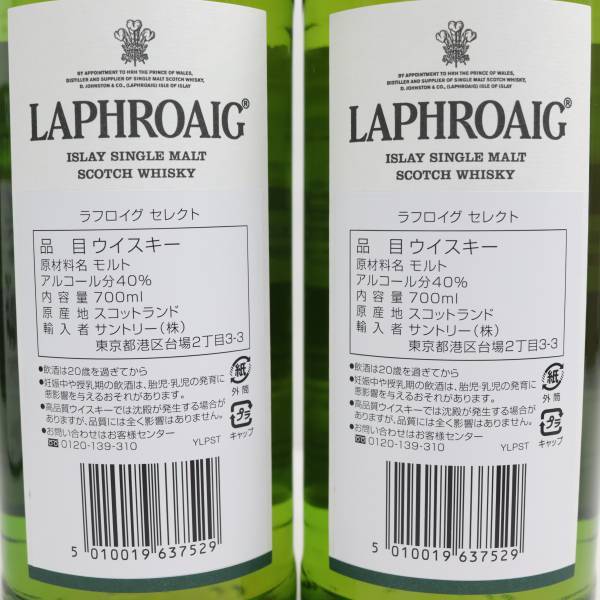

I love it, but it’s not for everyone.īunnahabhain Moine Oloroso – A limited edition from an Islay distillery that doesn’t normally do smoky whiskies, Bunnahabhain sometimes releases peated experiments, and this is one of them. Meat and smoke beat you up, though there’s a gentle citrus element that can be found amidst the chaos. It’s phenomenally overwhelming in every way.
#LAPHROAIG 10 SERIES#
There’s also a cask strength version of this which is phenomenal, but start with the standard release first.īruichladdich Octomore 8.3 - Bruichladdich’s Octomore series consist of some of the peatiest whiskies in the world, and this particular bottle is possibly the peatiest whisky ever released. It’s incredibly malty and doughy, perfect with that light smoky nudge at the end. 99% of the time, this number measures the ‘peat’ level of the barley before it is processed, and many of these smoky phenols are subsequently lost to varying degrees in all stages of whiskymaking and maturation.Īrran Machrie Moor – A whisky from one of the few independent distilleries out there, Arran’s Machrie Moor is a great example of how a very light peating level can complement the rest of the whisky.

It’s far from a perfect measurement, however. Phenols in whisky are measured by PPM (Phenolic Parts per Million), and it’s the first number any whisky geek wants to know when they drink a smoky whisky, under the assumption that the higher the number means a peatier malt. When peat is burned in a kiln for making whisky, it releases smoke loaded with phenolic compounds that end up in the barley, which eventually becomes the liquid in your glass. Peat is plant matter (mostly mosses) that has decomposed for thousands of years in an environment with no oxygen. Peated aromas (created by a group of compounds called phenols) come from the malted barley used for whisky when it is dried using peat smoke. Definitely among my favorite sipping whiskies with a great depth to both the aroma and flavor.So in the middle of this new peat craze, let’s start with a quick geeky primer on peat in whisky before moving on to some recommendations. They aren’t as heavy, oily and brooding as a Lagavulin nor are they as light and crisp as Ardbeg they inhabit that pleasant middle ground where everything comes together in wonderful harmony. I’m a big fan of Islay whisky in general and Laphroaig is no exception. Smoke, malt, graham, an ambiguous sugary sweetness and a medicinal note play out with a hint of wood on a long and pleasant finish. Very well balanced with a medium body and a light smooth texture that makes it incredibly easy to sip. It’s a fantastically deep and rich flavor that’s a bit like eating a s’more, campfire and all. A mild peat and citrus bring up the rear along with some notes of cocoa, fruit and honey. That campfire smokiness comes tearing across the palate like a bat out of hell with vanilla, butterscotch, malt, Novocain and graham in the sidecar. A wonderfully complex nose with layer after layer of enticing aromas. These big heavy oily notes get cut with hints of citrus, light fruit, malt, honey and a slightly vegetal underpinning. Warm peat comes out first followed by some nice salty briny notes and accompanied with some caramel, iodine, smoke and char. Basically the royal stamp of approval because they make tasty whisky. They received this honor after the prince visited his favorite distillery in 1994 and they’ve included it on their packaging ever since. A Royal Warrant means that they supply a good or service to a royal court or a certain royal personage and has no significance beyond lending prestige and quality, via-association, to the brand. In addition to being almost 200 years old (I’m expecting big things from them next year) It’s also the only whisky to carry the Royal Warrant of the Prince of Wales.

Though through all of this one thing has remained the same and that is quality. Beam has owned Laphroaig since 2005 when it was called Fortune Brands. This lead to it brand changing hands several times over the years and is Currently owned by Suntory, who now owns Beam. The distillery got it’s start in 1815 by Donald and Alexander Johnston and was run by the family till 1954 (139 years) when the last member of the family died without an heir. When the flagship product tastes this good, you know you’re dealing with a quality brand.


 0 kommentar(er)
0 kommentar(er)
